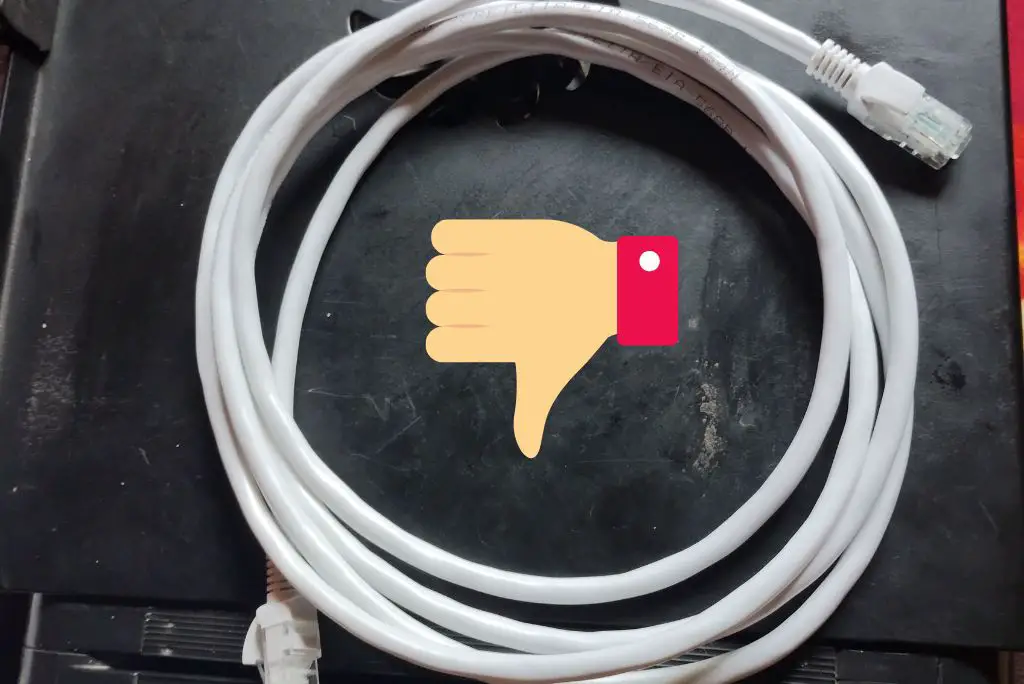While you run two cables together, you may have questions about the interface, especially when you run Ethernet or any other communication connection with other cables.
As we all have little to high knowledge about the interference of Ethernet cables. So if you’re running your ethernet cable beside the power, you’ll have a few doubts because both cables are important for us.
So, Can Ethernet Cable Run Next To Electrical?
NO! it is advised not to run an ethernet cable next to your electrical or in the same conduit because of the interference or crosstalk. When you run a communication connection or ethernet cable next to an electrical, you get performance drop due to EMI.
Although many people run Shielded Ethernet cable or STP next to electrical lines to eliminate the crosstalk because it has extra protection to do so, but if it is a high voltage line, you’ll still have interference.
So looking at the overall situation, it is best to avoid running your ethernet next to electrical, whether it is shielded or unshielded, to get the best internet performance and eliminate any EMI.
But if you have no option and believe it is a low-volt electrical line, then you can use a shielded ethernet cable [which can be found here on amazon] and run it with a few inches gap and proper grounding.
You might have other problems, and I’ve discussed some other tips below.
Issues with Running Ethernet Next To the Electrical or Power Cable?
Running your Ethernet cable next to Electrical or power can cause interference and a few other issues. They are;
#Interference
Interference is the most common issue with the ethernet cable, and because of that, the internet speed gets slow. It happens when two waves combine by changing their place and make high, low, or the same wave.
So when you run your ethernet cable with our cable, the same thing happens, and as a result, you get slow internet speed or performance drop, which can be frustrating while working.
Thus, it is recommended to run ethernet cables separately to have the best internet experience.
#Heating
Usually, ethernet cable doesn’t get hot, but it has been seen when someone runs an ethernet cable next to power lines, the cable gets hot.
This happens because of electrical interference; the electrical wave combines with the twisted pairs and makes the whole cable hot.
Here is a guide if you want to protect your ethernet from the heat.
#Cable Might Not Last Long
It gets damaged when your ethernet cable gets hot for a long time. As mentioned earlier, when you run ethernet next to the power line, your ethernet gets hot; thus, your cable might only last for a while.
So these are the main issues you can face if you run ethernet with power cables. Also, you can have other issues if your power line is damaged.
How To Safely Run Ethernet & Electrical Cable Together?
- First, always try to run both cables in different conduits or pathways, not in a single one.
- Make sure you have a 10 to 12 inches gap between the conduit or wires [ethernet and power].
- If the voltage is 120V or 240V, normal household voltage, then an 8 to 12 inches gap is good with any Ethernet cables STP or UTP. But, if the gap is a little [2inch], you should have an STP ethernet with proper grounding.
- You should talk with an electrician for commercial buildings where the voltage is high.
- You should be using CAT 5e or better versions than that.
- POE or Power Over Ethernet should not be too close to electrical lines.
- The distance over shielding is the best choice, but if you have no option, but to run both cables closely, then a shielded ethernet is a must.
- Never run the cables parallel, as it increases the chance of interference.
What Should be the Distance between Ethernet & Electrical?
According to National Electric Code (NEC), the distance between ethernet and electrical should not be lesser than 2 inches if it is a Shielded Ethernet Cable [STP]; but if you are running an Unshielded Ethernet Cable [UTP], then the min distance is 8 inches.
Distance matters a lot to eliminate interference and provide a smooth internet connection without any other issues.
Also, the cable type is a vital thing that you should always be careful of. And after installing everything, if you’re still having any issues, ensure there are fewer high-voltage electrical components near your ethernet cable.
High volt things like generators, electric motors, and others can also increase the interference or crosstalk.



